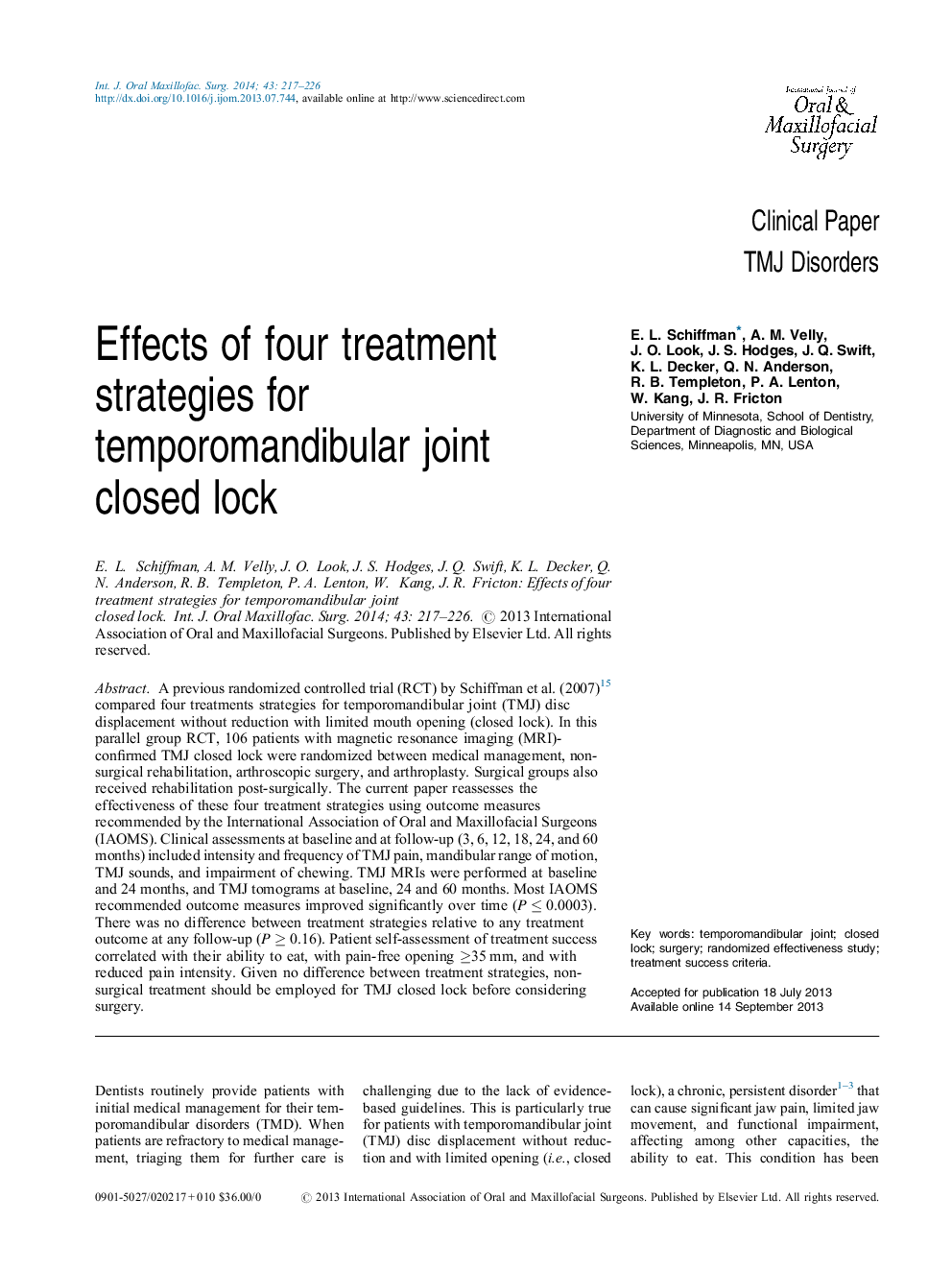| Article ID | Journal | Published Year | Pages | File Type |
|---|---|---|---|---|
| 3132463 | International Journal of Oral and Maxillofacial Surgery | 2014 | 10 Pages |
A previous randomized controlled trial (RCT) by Schiffman et al. (2007)15 compared four treatments strategies for temporomandibular joint (TMJ) disc displacement without reduction with limited mouth opening (closed lock). In this parallel group RCT, 106 patients with magnetic resonance imaging (MRI)-confirmed TMJ closed lock were randomized between medical management, non-surgical rehabilitation, arthroscopic surgery, and arthroplasty. Surgical groups also received rehabilitation post-surgically. The current paper reassesses the effectiveness of these four treatment strategies using outcome measures recommended by the International Association of Oral and Maxillofacial Surgeons (IAOMS). Clinical assessments at baseline and at follow-up (3, 6, 12, 18, 24, and 60 months) included intensity and frequency of TMJ pain, mandibular range of motion, TMJ sounds, and impairment of chewing. TMJ MRIs were performed at baseline and 24 months, and TMJ tomograms at baseline, 24 and 60 months. Most IAOMS recommended outcome measures improved significantly over time (P ≤ 0.0003). There was no difference between treatment strategies relative to any treatment outcome at any follow-up (P ≥ 0.16). Patient self-assessment of treatment success correlated with their ability to eat, with pain-free opening ≥35 mm, and with reduced pain intensity. Given no difference between treatment strategies, non-surgical treatment should be employed for TMJ closed lock before considering surgery.
